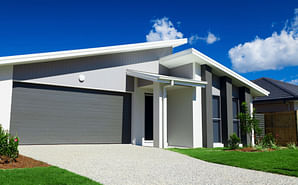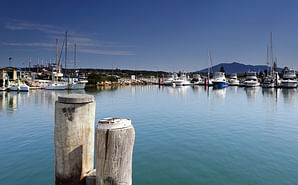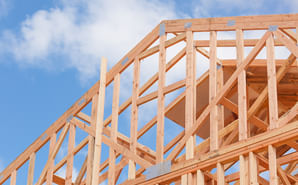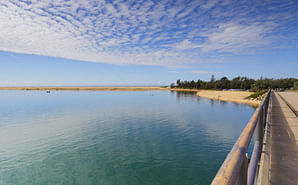Back Yard Burning
Procedure for burning of ALL vegetation or other waste in the Bega Valley LGA.
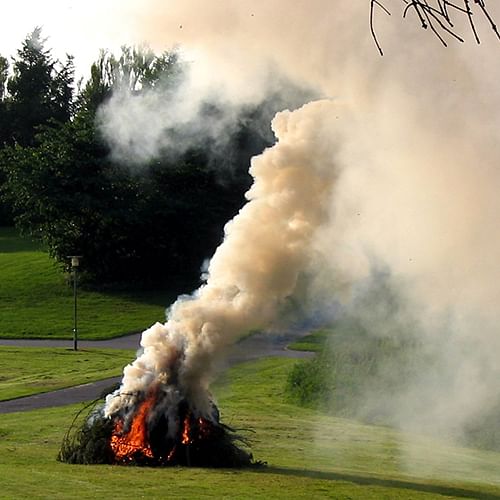
If you are wanting to undertake burning of dead and dry vegetation from routine property maintenance, you will need to consider if approval is required before you burn.
Approval may be required from Council, NSW Rural Fire Service and Fire and Rescue NSW, depending on where you live and the time of year that you’re wanting to burn.
Its important to remember that there are alternatives to undertaking pile burns. As burning vegetation in urban areas is discouraged, it is recommended that vegetation should be disposed of in garden organics (green) bins or taken to one of Council's Waste Management Facilities.
Council approval
Burning dead and dry vegetation from routine property maintenance is permitted in certain areas.
Council's Burning Off in Open Areas Policy provides a deemed approval with conditions for burning dead and dry vegetation. This means that you may not have to seek approval from Council to undertake small pile burns as long as you meet the following criteria.
You have deemed ‘blanket’ approval to undertake small pile burns if:
- your property is be greater than 3000m2 and classified within the following zones:
- RU1 – Primary Production
- RU2 – Rural Landscape
- RU3 – Forestry
- RU4 – Primary Production Small Lots
- RU5 – Village
- R5 – Large Lot Residential
- E2 – Environmental Conservation
- E3 – Environmental Management
- E4 – Environmental Living
- RE2 – Private Recreation
- the open fire is at least 20 metres away from dwellings or neighbouring land;
- you have adequate water supplies immediately on hand to extinguish if required;
- you notify your neighbours and local RFS or NSW Fire Service/Fire and Rescue NSW with at least 24 hours notice of your intention to burn (verbal or written);
- you are a responsible adult who supervises the open fire;
- you remove all combustible material within 4.5 metres of the open fire;
- the weather conditions are suitable – the predicted weather indicates a wind speed not greater than 10km/h;
- the burning does not cause nuisance to neighbours or smoke hazard to traffic; and
- your burning activities are un accordance to the NSW Rural Fire Service/Fire and Rescue NSW document “Standards for Pile Burning”.
Don’t fit this criteria? How to obtain individual approval
Council is responsible for the management of local air quality issues and has the power to take action under the Protection of the Environment Operations (POEO) Act 1997 in accordance with the Protection of the Environment (Clean Air) Regulation 2010. In order to help reduce the impact of wood smoke on human health and the environment, Council need to assess the proposed burn area to ensure that those around you are not adversely affected by your burning.
If you wish to burn vegetation in a residential area that doesn’t meet the deemed criteria, you will need to apply to Council for approval through Council’s written application form. Depending on the location, you’ll need written support from any adjoining neighbours with dwellings within 75 metres of the proposed burn. An application must be made 21 days prior to the proposed date of burning.
Council officers will assess the application in accordance with the POEO (Clean Air) Regulation 2010, taking the following matters into consideration:
- the impact on regional air quality and amenity
- the impact on local air quality and amenity
- the feasibility of re-use, recycling or other alternative means of disposal
- any opinions of the sector of the public likely to be affected by the proposal approved.
Once all this is considered Council will advise the applicant in writing if they are permitted to burn.
It should be noted that generally in residential areas other methods of disposing of vegetation are available therefore burning will only be permitted as a last resort.
An approval from Council to burn does not negate the requirement to apply for an open air burning permit from your local Fire Service during the Bush Fire Danger period. Contact your local NSW RFS Fire Control Centre if you live in a rural fire district, or Fire & Rescue NSW Station if you live in a fire district to obtain a fire permit.
You may be charged a fee for Council to assess this application. An approval will list conditions that seek to minimise adverse impacts and there are significant penalties for failing to obtain these approvals or comply with their conditions.
NSW Rural Fire Service and Fire and Rescue NSW approvals
The NSW Rural Fire Service or NSW Fire + Rescue should be contacted before the lighting of any fire.
Residents are required by NSW law to take steps to minimise air pollution. Steps must be taken to reduce smoke and the impact on neighbours by:
- Not burning wet or green vegetation
- Considering how long the fire will burn
- Proximity to neighbours
- Wind and weather conditions.
A Fire Permit is required for burning activities during the Bushfire Danger Period. You can find your nearest fire station or visit the NSW Rural Fire Service to get the latest information.
Pile Burning for Households with Council Deemed Approval
Use these steps to determine that you have the appropriate approvals and measures in place for a safe pile burn.
Before the day of the burn
- I have checked that the vegetation that I want to burn is the dead and dry.
- My burn pile is consistent with the policy and the pile burning guidelines.
- I have got a permit from Fire and Rescue NSW (year round) or local Rural Fire Service (when required).
On the day of the burn
- I have confirmed with the Fire and Rescue NSW or Rural Fire Service of my intention to burn.
- I have notified my neighbours about what’s going on
- I have checked the weather. The wind is not predicted to be greater than 10km/h. If the breeze is likely to come up – STOP!
Before you start the burn
- I am a responsible adult that will be monitoring the fire at all times
- I have my sprinklers, hoses, pumps and rakes in good order and condition
- I have a good water supply available
- I am wearing solid footwear, glasses, gloves and non-flammable clothing
- I have thoroughly cleared the area around the burn pile and saturated the ground with water
Light up the pile
- Do not leave the pile unattended.
- Ensure the fire is out by sunset.
Things to remember
- You should never light a fire during a Total Fire Ban.
- Even if you have obtained a Fire Permit from the NSW Rural Fire Service or Fire and rescue NSW, your permit may be cancelled on days when the fire danger is very high or above or when the EPA declare a ‘No Burn Day’.
- A deemed approval from Council does not automatically mean the relevant Fire Service will issue you with a Fire Permit.
Downloads
- Burning Off in Open Areas Policy - To view the policy visit Public Policies and search for the term 'burning off'.
- Application to burn vegetation

